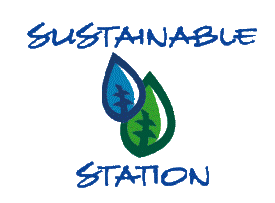
In designing the perfect home for our household, I have been studying and exploring the different types of building materials available. Some are more eco-friendly than others.
I'll share my findings with you.
First, your house is going to need walls and insulation.
My top picks are:
SIP's "Structural Insulated Panels" - take care of the walls and the insulation in one step. SIP's can have an R-Value of up to 60 (1 foot thick.) Even at an inch of this insulation, you will be far better insulated than the "old pink fiberglass" style (about 11 R Value, if you are lucky enough to have it installed correctly.).

The walls work like I-beams and produce super strong structures- able to withstand hurricanes. They resemble foam core board and resist fire, insects, rodents, mold, and mildew, because of the compressed nature of the product. Some are made with straw in the foam mix. Generally pays for itself in savings in about 5 years.
Straw bale- A house built with straw bale will be comfortable year round. It has amazing R-Value of 30 when covered with stucco. Wider bales provide more insulation (and really really thick walls, but make neat window seats!) It is surprisingly fire resistant and rodents have a hard time getting into the straw if the stucco is done correctly. Water, however can pose a real problem for straw bale homes.

The building must be constructed when all of the bales are DRY. What makes this appealing to me is the price! Straw is a waste material and can be purchased locally, nearly everywhere, for cheap. Construction goes fast when the bales and workers are ready to get it done!
Rammed Earth- These walls may be too "earthy" for some folks, but if you are trying to heat and cool with passive solar, they make a great thermal mass to absorb the sun. They are constructed with local dirt and clay mixed, and are pounded into form pnuematically.

Homes made of rammed earth use about 1/3 the energy of conventional homes. It makes for a healthy environment in the home. The walls control humidity(by absorbing water), are fireproof, soundproof, and rodent proof. They even show "rings" like a tree from the layers as they are done.
Wood frame and log homes come with a host of problems ranging from termites to shrinkage and cost much more than alternatives.

The majority of logging used to get woods to us is not done sustainably. If you want to use wood be sure to check for the "FSC" stamp to show you the lumber comes from a provider dedicated to sustainable practices, i.e. they plant what they tear down. However, it takes quite a while to grow back to maturity.
If you want the LOOK of a log home but with less wood used, and better insulation, take a look at ELogs The most environmentally friendly way to have a log home.
There are more options out there. These are just a few of my favorites.



No comments:
Post a Comment